Almost 30-years in the making, Martin Scorsese finally delivers SILENCE. Adapted by Scorsese and co-writer Jay Cocks from Shusaku Endo’s 1966 fact-based historical novel, Scorsese delves into the world of 17th-century Japan as efforts by Jesuit priests to convert and minister to the hidden, or silent, Christian believers are met with persecution, torture and even death as Japanese Inquisitors attempt to apostatize the converts and priests alike. (For the uninitiated into Christian dogma, “apostasy” is the act by which one renounces his faith.) In the case of 17th-century Japan that meant placing one’s foot upon a religious carving depicting various images of Mary or Jesus, a fumi-e, with what were empty promises that no harm would befall those who renounced Christ. A theologically complex, yet exquisitely beautiful and spiritual journey, one’s patience is rewarded with a richness and soul searching introspective experience that lingers long after the curtain falls on SILENCE.

The story begins with two young Jesuit priests, Sebastio Rodrigues and Francisco Garrpe, shocked by the news that their former mentor Christavao Ferreira, from whom there has been no communication since his disappearance in Japan, has apostatized, renouncing the priesthood and his faith, and may even be dead. With their only clue a lost letter which tells of the tortures inflicted upon Christian priests and converts as a means to quash the spread of Christianity, as well as rumors that Ferreira is now living as a Japanese with a Japanese wife and family, Rodrigues and Garrpe insist it is their calling and path to travel to Japan to find Ferreira and prove the rumors untrue, while continue ministering to the silent Christian faithful.

Requiring a Japanese to get them into the country, Rodrigues and Garrpe are introduced to Kichijiro, a drunken sot allegedly consumed with guilt over his prior life actions. Already apostatized once in an unsuccessful effort to save his family, Kichijiro longs to return to Japan and sees this as his opportunity. It doesn’t hurt his standing with Rodrigues when he repeatedly insists he is still Christian, although he spends much of the film seeking confession and forgiveness for an ongoing litany of double-dealing sins. Garrpe, however, is not so quick to trust Kichijiro.
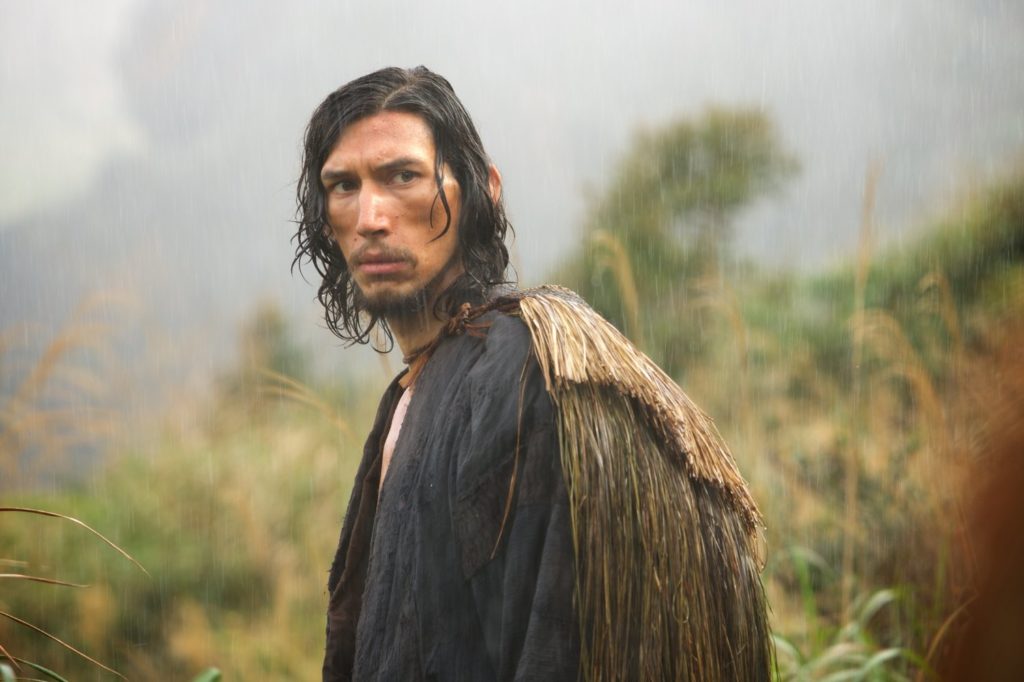
Good to his word, though, Kichijiro does indeed smuggle the young priests into Japan where they are connected with Christians in one village. Hiding their faith, the faithful anxiously seek communion and confession from Rodrigues and Garrpe, which Rodrigues is eager to perform in the dark of night while Garrpe still has reservations. As the two become hidden witnesses to the edict of the Inquistor, women are wrapped in straw and set on fire or drowned in the sea, boiling water is slowly sprinkled over salt water scarred flesh, Garrpe sees the error of their ways by continuing their mission to find Ferreira, but Rodrigues persists.

Agreeing that each must go in separate directions so as to expand their search for Ferreira and also to minimize detection by the Inquisitor, the film shifts focus to Rodrigues. More prideful than should any man be, let alone a priest, Rodrigues equates himself to the Messiah. He knows if caught his actions and defiance, and whatever torture may be inflicted upon him will make him, which is exactly what he seeks. But the Inquisitor is wise and understands what Rodrigues seeks, thus when he ultimately captures him, he doesn’t torture him, he tortures other Christians as a means of taunting Rodrigues into apostatizing. Not even seeing Garrpe achieve the martyrdom that he saw desperately sought does Rodrigues. He keeps praying to God asking for answers, believing all of the horror to be God’s fault, only to met with silence; until the day comes when he hears God’s answer.

It’s during the third act of SILENCE where Scorsese shows some masterful storytelling as he veers from Endo’s novel and its omniscience into Rodrigues’ internal conflicts, allowing the audience to seek answers and insights for themselves gleaned from Andrew Garfield’s performance and Rodrigo Prieto’s metaphoric visuals.
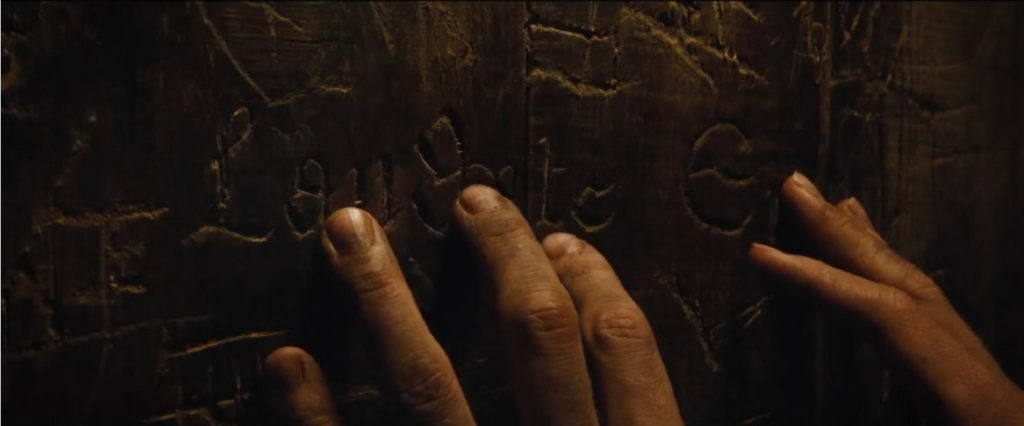
As a final effort to force Rodrigues to apostatize, the Inquisitor unites him with Ferreira who delivers the most Christ-like explanation for his own disappearance as well as the failure of Christianity to take root in Japan, an explanation that not only connects the dots of SILENCE, but all the dots of religion, science and the world, as fitting today as in the 17th-Century.
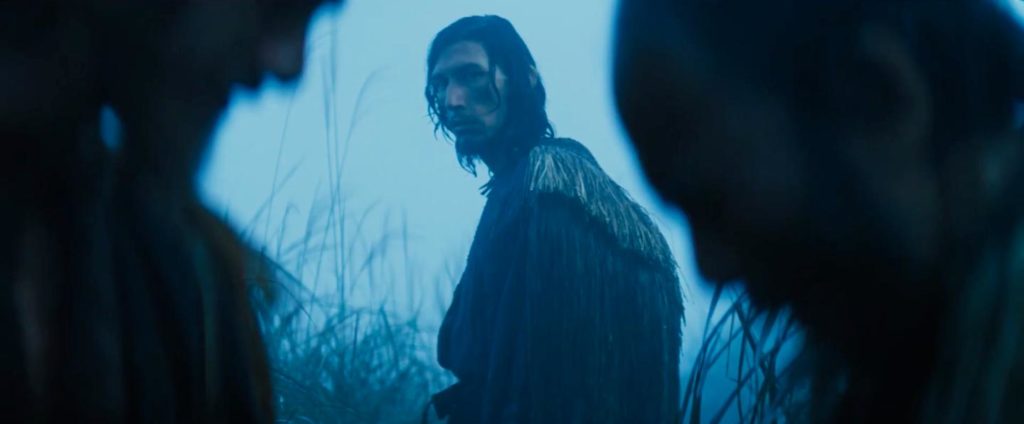
Script is well written and compelling as we see man’s struggles with the human frailties that come with doubt versus unwavering devotion and faith. Is there a line in the sand to be drawn between compassion, self-sacrifice and the greater good? The paradoxical nature of the script are ripe for critical thinking and self-reflection. But where SILENCE speaks the loudest is with the silence itself, both literally and metaphorically.
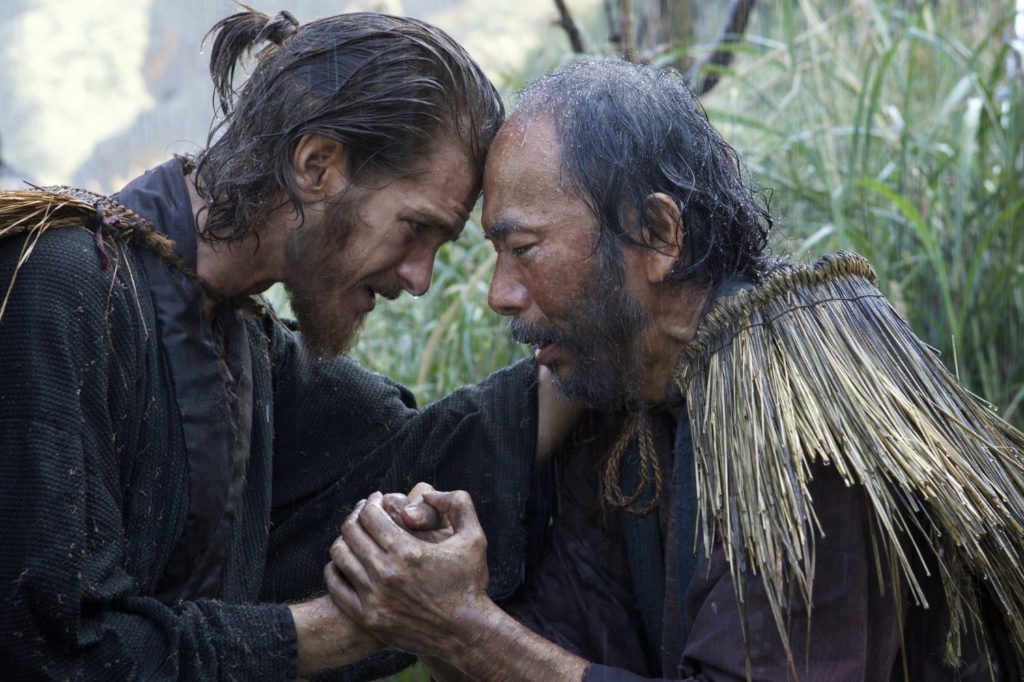
The irony of casting (or the Fate of the movie gods) will not be lost on anyone as Andrew Garfield, fresh off playing WWII medic and conscientious objector Desmond Doss, is joined by two “Star Wars” Jedis, Liam Neeson and Adam Driver.
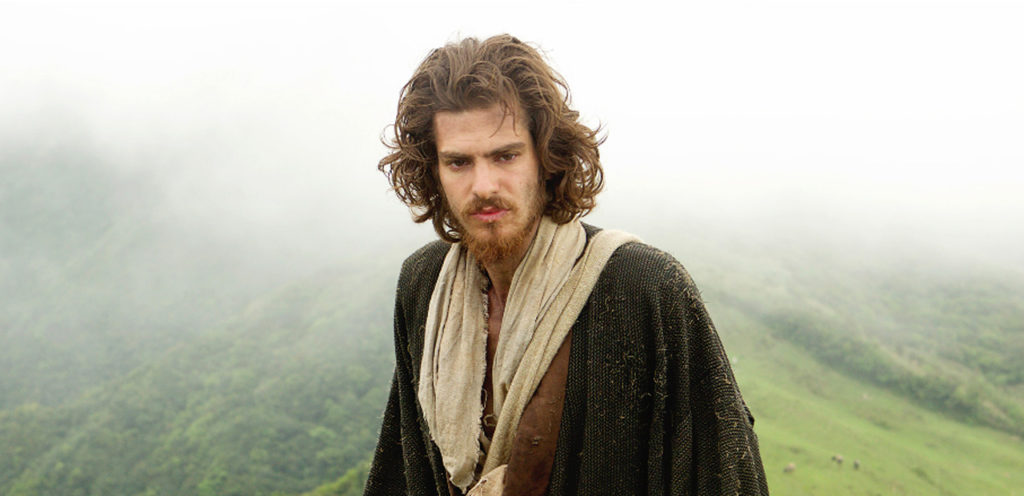
As Rodrigues, Garfield is a powerful, but arrogant force. Scorsese pushes the envelope a bit too far with Rodrigues equating himself to Christ, at times even to the point of disliking Rodrigues and actually questioning his faith. From the physical appearance of Garfield’s hair and beard, he is the mirror image of so many paintings and representations of Jesus Christ. The visual imagery is already there without going full bore. While a solid performance from Garfield, he is more nuanced and effective this year as Desmond Doss in “Hacksaw Ridge”.
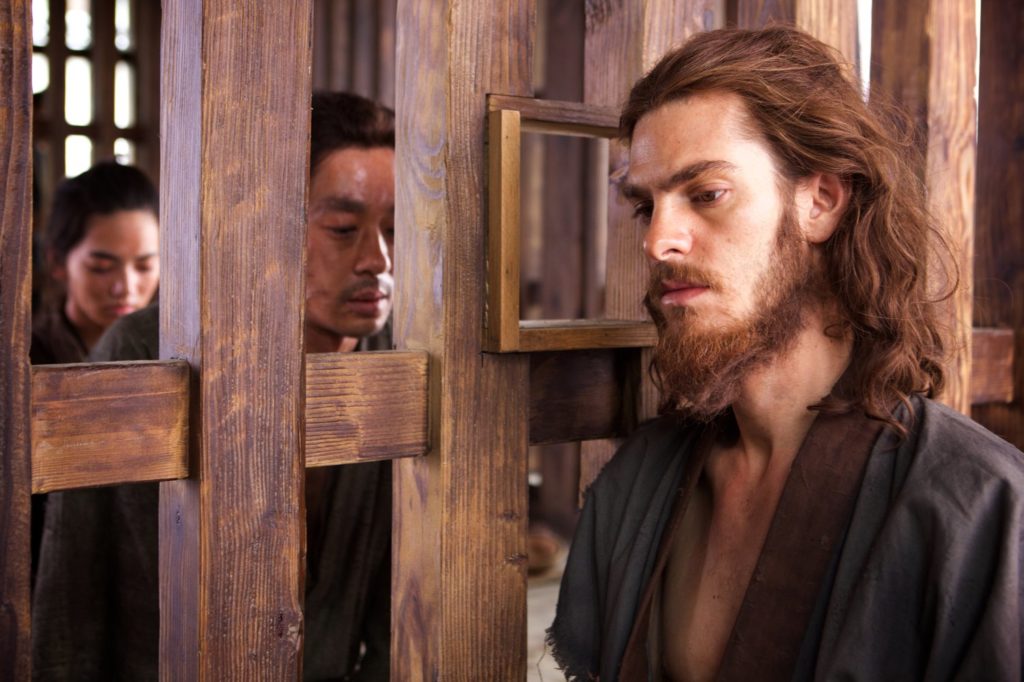
Adam Driver brings more of a wimpy and at times whiney nature to Garrpe. There is no sense of conviction of faith which perhaps is what makes it most effective when Garrpe unwittingly achieves the martyrdom which Rodrigues so desperately desires.

Liam Neeson as Ferreira, however, is the calm in the eye of the storm, the sage with life experience who has found a balance between the force of nature and the will of God. His monologue delivery to Garfield’s Rodrigues is soft-spoken and serene and so effectively delivered one can feel the pace within Ferreira’s soul as he speaks. Extremely powerful moments come thanks to Neeson.
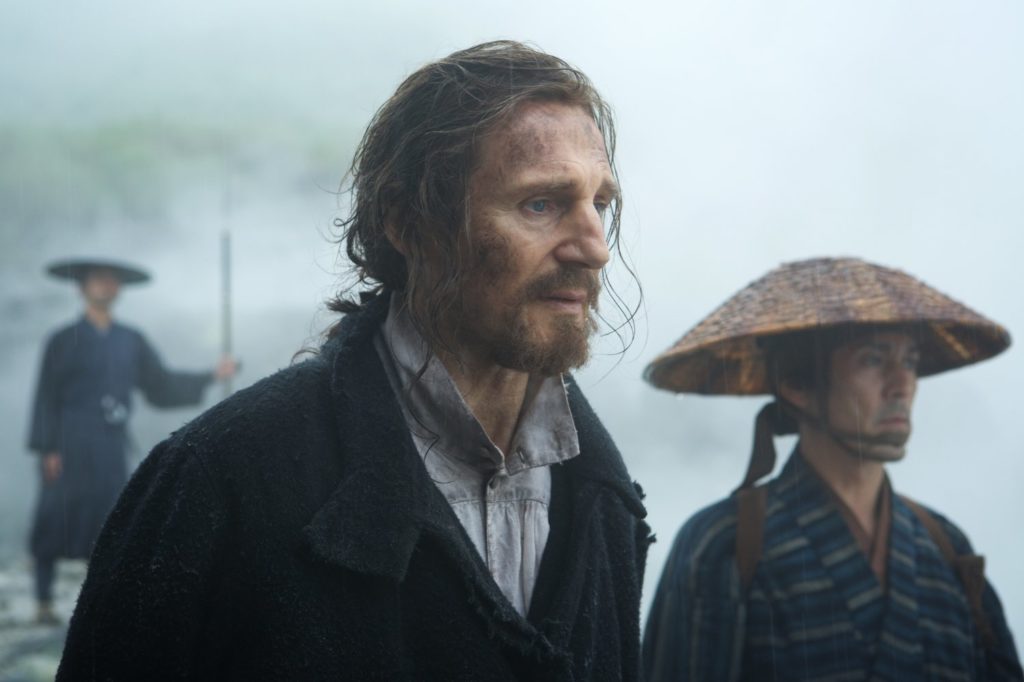
Casting of the Japanese characters is exemplary, starting with Yosuke Kubozuka as Kichijiro. Always dirty with long stringy hair, Scorsese and cinematographer Prieto focus on Kubozuka’s eyes which tell their own story amongst the silence. As Inquisitor Inoue, Issey Ogata oozes evil with the silken smoothness of Christoph Waltz. A glorious performance.
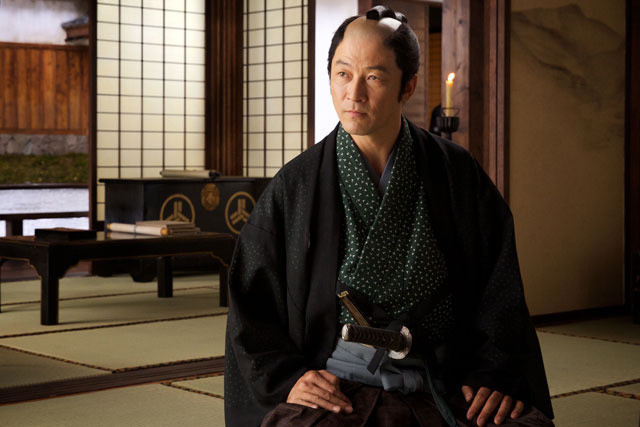
As comes as no surprise, SILENCE is exquisitely lensed by Rodrigo Prieto. Shot on film, the vibrancy of the greens of the hillside and foliage, the ruddy muddy texture and color of dirt and “life” that covers the characters, the blue baptismal purity of the ocean and rich white spray cresting each wave, the mists and shadowy greys of a sad sky countered with the rich golden warmth of the sun all speak to the idyllic meld of nature and God. Seaside crucifixions wield as much emotional power as the roaring waves themselves. Nighttime sequences are inky blue-black highlighted with the red orange flame of a torch or flicking light of a small candle. The result is an arresting gorgeous, rich and textured tableaux.

Longtime Scorsese production designer Dante Ferretti immerses us in a world shrouded by silence and cloaked by mud and night. Villages and villagers are caked in mud and grimy oily dirt which just adds to the oppressive nature of the times and metaphorically speaks to the idea of silence as if voices are buried. The Japanese prison is sparse yet very feng shui in design.
But beyond that, the soundscape and sound design is almost ethereal in its celebration of “silence” and nature. There is a delicacy rarely heard on film. Bigger and more bombastic is not always better, as is evidenced by the soundscape here. The awe that comes from soft winds in the leaves and tall grass, the increasing intensity of hearing crickets and buzzing insects, and then set that against rain and surf is almost magical. It puts us under its sonic spell, readying us for the ultimate meeting between Ferreira and Rodrigues and the powerful monologue about nature and religion. Simply beautiful.
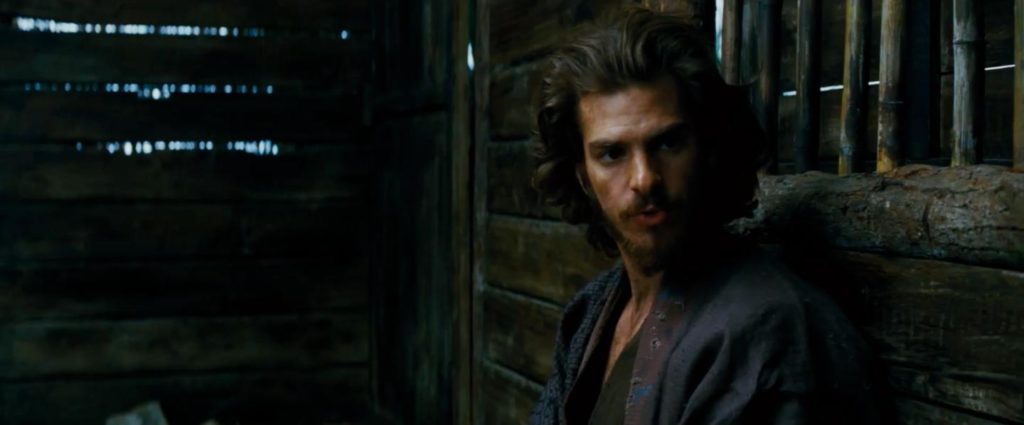
When it comes to editing, nothing tops Thelma Schoonmaker. As always, editing is perfection thanks not only to her having one of the best editing eyes in the business, but the keenest innate sense of storytelling. Clean. Crisp. While the film could have easily been cut to come in under its current 2 hour 46 minute mark, whether it would have achieved its ultimate emotional impact is unknown, but highly doubtful it would have. Some extended scenes may feel a bit of a struggle, but the payoff for what comes after makes it worth the wait.
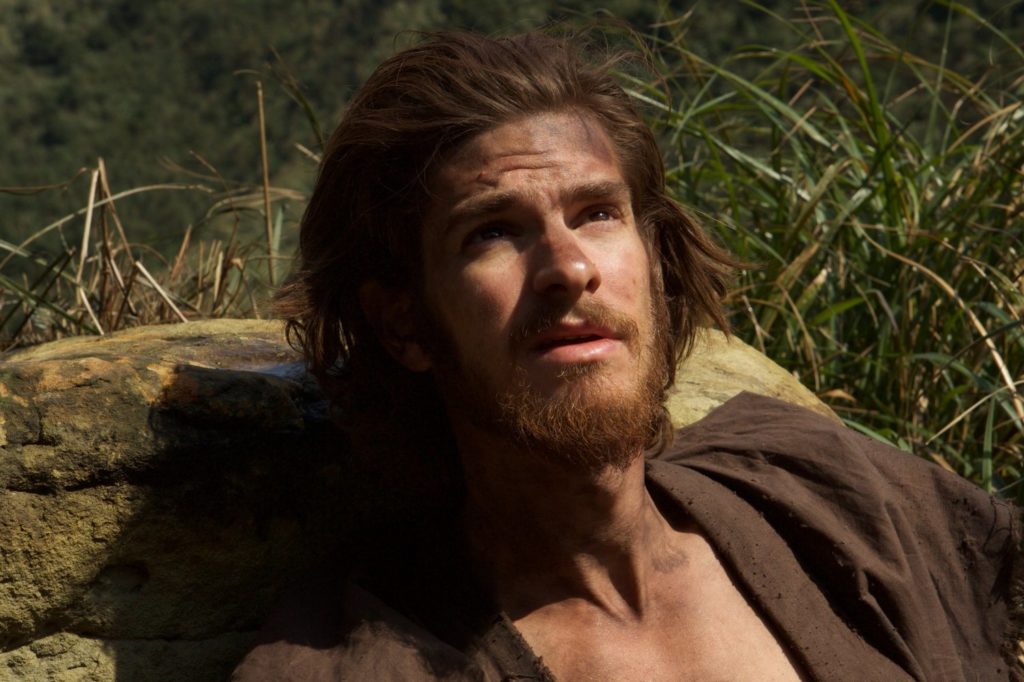
Martin Scorsese never shies away from visceral imagery but with SILENCE, there is a poignancy and even elegance to the images that comes from the quiet of the film while the soundscape of nature creates a dichotomy that softens the heinous acts of the Inquisitor but also makes it more impactful and striking. Positing the big questions that have long swirled around the exploration of faith, SILENCE speaks volumes.
Directed by Martin Scorsese
Written by Martin Scorsese and Jay Cocks
Cast: Andrew Garfield, Adam Driver, Liam Neeson, Ciarin Hinds, Yosuke Kubozuka, Issey Ogata












